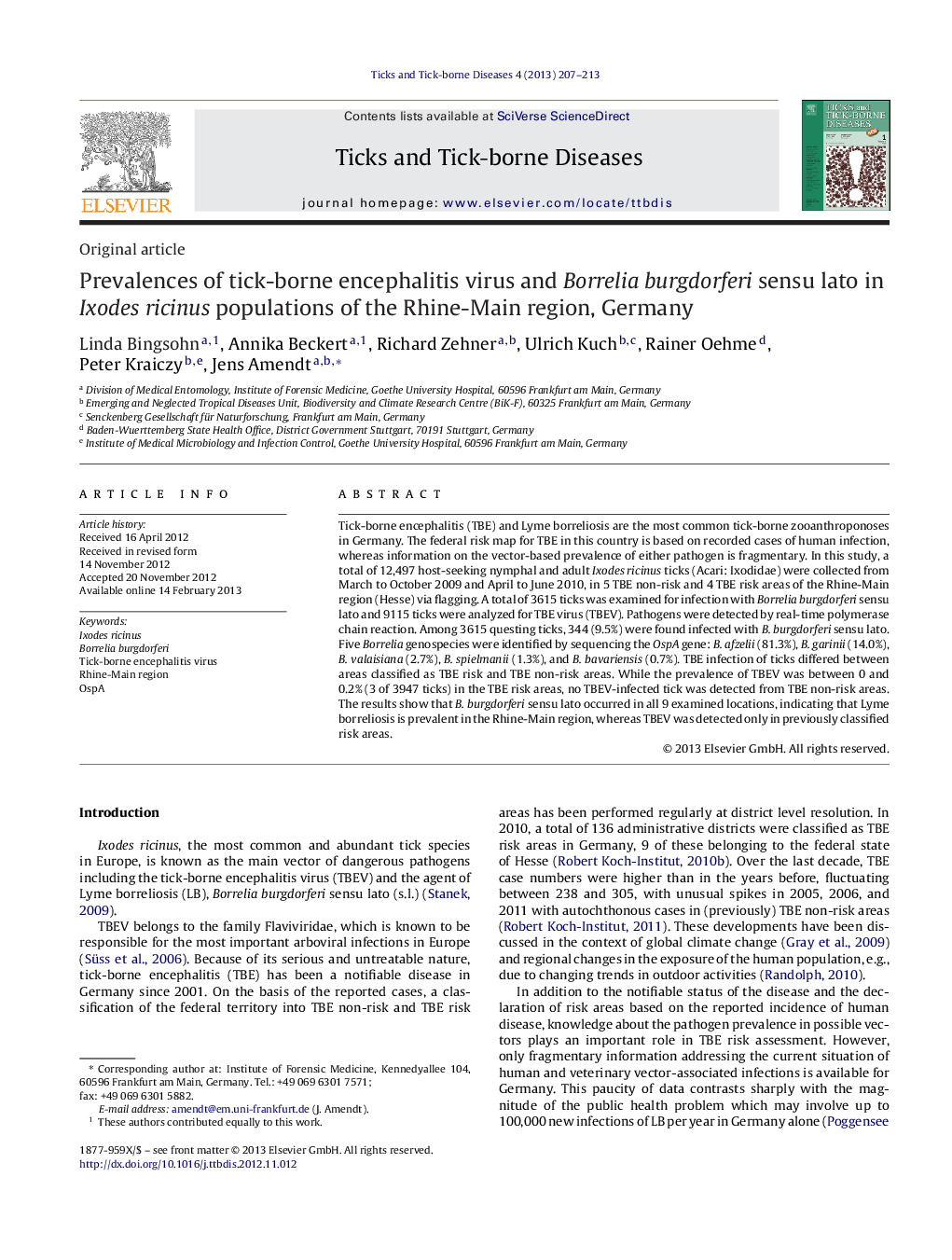| Article ID | Journal | Published Year | Pages | File Type |
|---|---|---|---|---|
| 2474168 | Ticks and Tick-borne Diseases | 2013 | 7 Pages |
Tick-borne encephalitis (TBE) and Lyme borreliosis are the most common tick-borne zooanthroponoses in Germany. The federal risk map for TBE in this country is based on recorded cases of human infection, whereas information on the vector-based prevalence of either pathogen is fragmentary. In this study, a total of 12,497 host-seeking nymphal and adult Ixodes ricinus ticks (Acari: Ixodidae) were collected from March to October 2009 and April to June 2010, in 5 TBE non-risk and 4 TBE risk areas of the Rhine-Main region (Hesse) via flagging. A total of 3615 ticks was examined for infection with Borrelia burgdorferi sensu lato and 9115 ticks were analyzed for TBE virus (TBEV). Pathogens were detected by real-time polymerase chain reaction. Among 3615 questing ticks, 344 (9.5%) were found infected with B. burgdorferi sensu lato. Five Borrelia genospecies were identified by sequencing the OspA gene: B. afzelii (81.3%), B. garinii (14.0%), B. valaisiana (2.7%), B. spielmanii (1.3%), and B. bavariensis (0.7%). TBE infection of ticks differed between areas classified as TBE risk and TBE non-risk areas. While the prevalence of TBEV was between 0 and 0.2% (3 of 3947 ticks) in the TBE risk areas, no TBEV-infected tick was detected from TBE non-risk areas. The results show that B. burgdorferi sensu lato occurred in all 9 examined locations, indicating that Lyme borreliosis is prevalent in the Rhine-Main region, whereas TBEV was detected only in previously classified risk areas.
